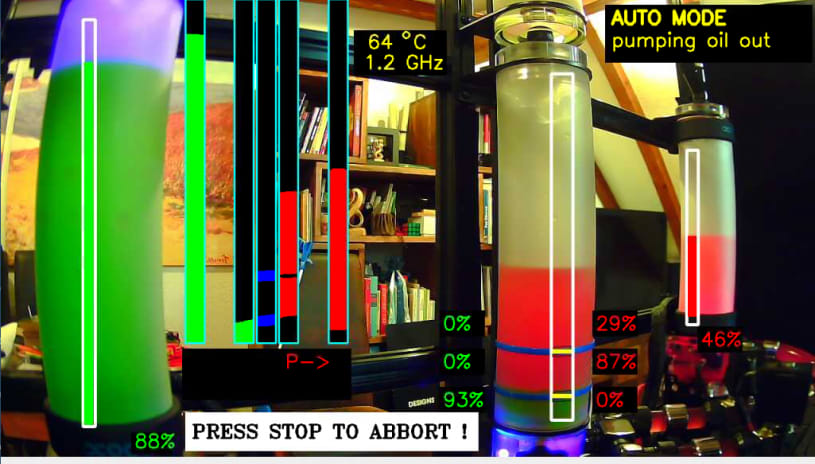Inspiring Uselessness: The Art of transferring Ideas
Follow articleHow do you feel about this article? Help us to provide better content for you.
Thank you! Your feedback has been received.
There was a problem submitting your feedback, please try again later.
What do you think of this article?
Well, to be honest, I wouldn't use a webcam to control the filling of tanks with an obscure green fluid in a real-world application either. This would very likely be a safety-related issue and would need a dedicated reliable safety-approved hardware. But the UM2 exhibit (see detailed description here) never aimed to demonstrate a real-world I4.0 example. It intends to inspire engineers to step out of their box when searching for solutions. I’m very convinced that most inventions have been created by transferring existing ideas and techniques. You watch how water droplets on the surface of a Lotus Leaf do not wet the surface but roll off like mercury. Immediately you imagine that imitating such a surface structure might result in a perfect water-repellent object. You see UM2 using a webcam instead of several sensors and lots of wiring and immediately imagine…?
I’ll give you a real-world application example which comes to my mind:
Let’s assume you work for a company with some 50 machines on a shop floor. You are responsible for I4.0 transformation. But they hate you interfering with the existing production line. They are “never touch a running system” people. They want you to show quick and convincing results of digital transformation. But on the other hand, they are afraid of losing lots of money with risky experiments.
One day, your boss asks you to get the health state of all machines (actually indicated by production traffic lights on top of them) into the cloud. The headquarter needs numbers. What is the average failure time of each machine? What is the longest shutoff period for each device? And please deliver the numbers to the cloud so that we can combine them smoothly with our ERP system’s data!
Okay, not rocket science. With traditional automation techniques this will be a straightforward little project of several weeks: Asking for a five-figure budget, coordinating several departments, getting approval for some minor changes in about 50 PLCs to attache cloud gateways, verification that no safety-relevant parts will be influenced, applying for some days of machine shutoff, several hundreds meter network cabling and you are done. Oh boy! If anything fails, in the end, you will be in big trouble…
Why not remember the articles about UM2 on DesignSpark? Life can be so easy using the technique explained there! Just mount a webcam at the shop floor’s ceiling and use a Revolution Pi with OpenCV to catch an image every 10 seconds. With its high resolution, you will be able to extract the pixels of the traffic lights and get their actual colour. As the photos are never stored but only very few pixels at the position of the traffic lights are used to get the machine status, you will have no problems convincing the works committee that there is no violation of worker’s privacy (I know, still lots of paperwork).
If angles and blocking objects are an issue, just use multiple webcams and RevPis. You still will not get close to a five-figure budget with this hardware. And saving time by not coordinating several departments, not supervising complex wiring and shutoff processes, you get plenty of resources to invest in security which is indeed much more important in such a project. Find ways to comply with the security level your company demands for getting data into the cloud. Using a Linux based system like the RevPi will give you all the freedom you need for this topic. In the UM2 article, I have shown just one way to get process values securely into the cloud using NodeRed and the IBM Watson IoT platform with encrypted data traffic.
In the end, you proudly can present a professional solution after maybe two weeks of planning, programming, testing, and installation. Your budget will be low as 1,000$, and no machine needed a shutdown (well, at least if you can manage to test your software without forcing the traffic lights to change colour). Your boss will be proud of you, and you mastered the art of transferring ideas entirely.


